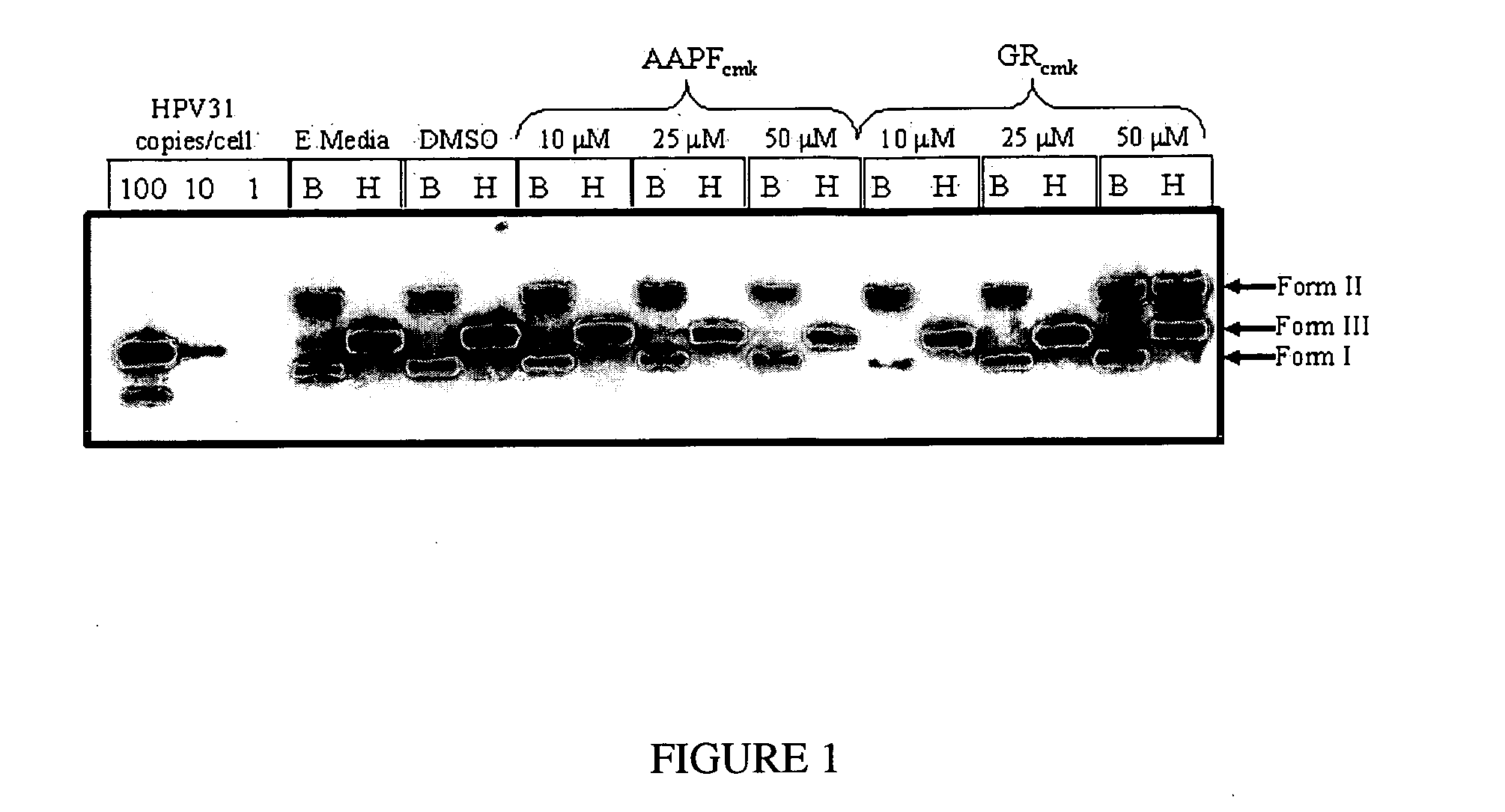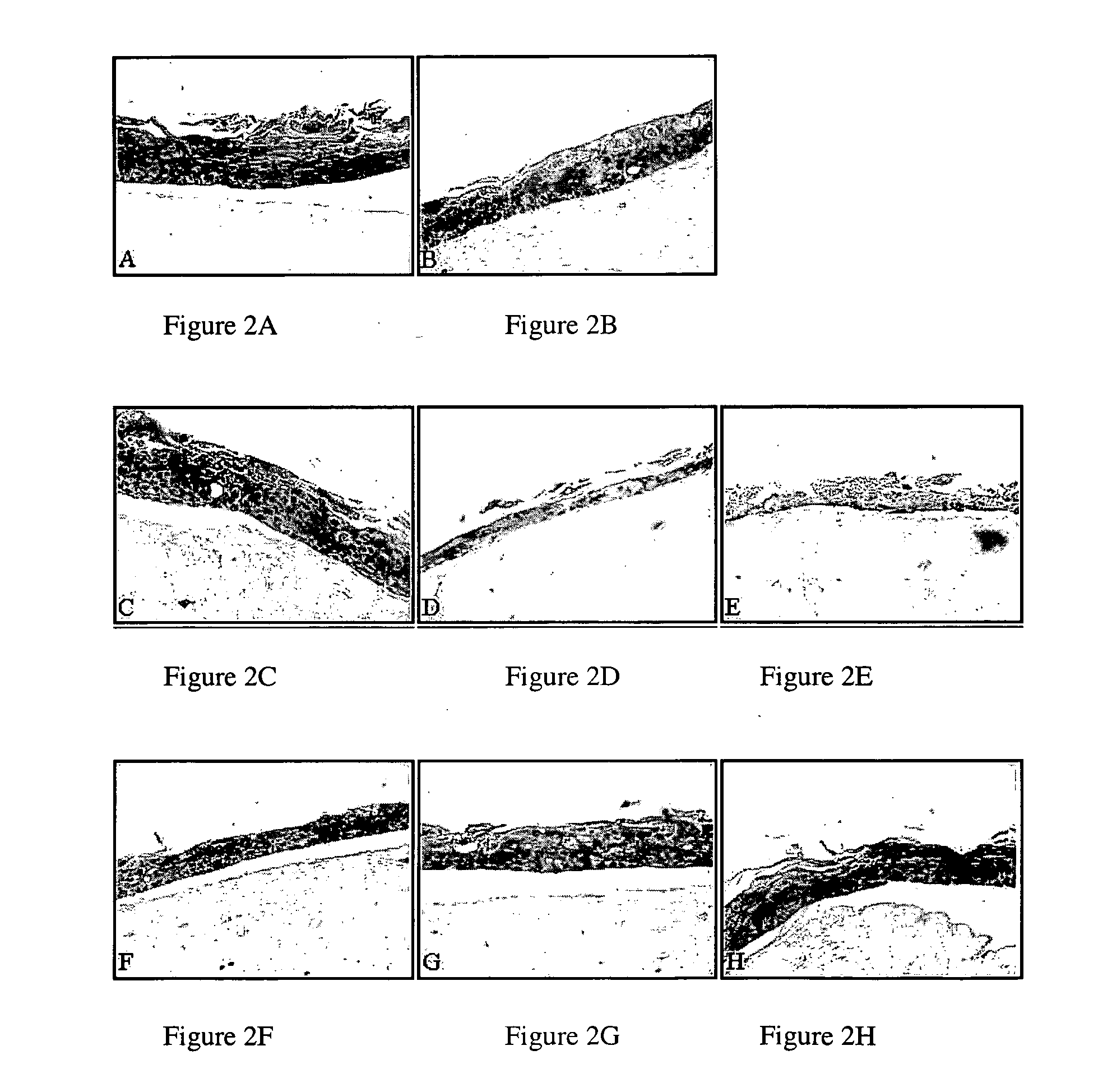Compositions and methods for inhibiting abnormal cell growth
a technology of abnormal cell growth and composition, which is applied in the direction of drug composition, peptide/protein ingredient, peptide source, etc., can solve the problems of developing countries with even larger clinical problems and no effective treatment for hpv infections, and achieve the effects of inhibiting cell growth, reducing viral dna in the cell, and reducing viral dna
- Summary
- Abstract
- Description
- Claims
- Application Information
AI Technical Summary
Benefits of technology
Problems solved by technology
Method used
Image
Examples
example 1
Keratinocyte and Organotypic Raft Cultures
[0109] Primary human foreskin keratinocytes (HFKs) are isolated from newborn circumcision as described previously (15). Briefly, the dermis is removed from the epidermis and discarded. The epidermis is washed three times with PBS containing 50 micrograms / milliliter gentamycin sulfate (Gibco-Invitrogen) and 100 U / mL nystatin (Sigma). The epidermis is then minced and trypsinized into a single cell suspension in a spinner flask. HFKs are grown in 154 medium (Cascade Biologics, Inc., Portland, Oreg.) supplemented with Human Keratinocyte Growth Supplement Kit (Cascade Biologics, Inc.). Keratinocyte lines stably maintaining HPV DNA-CIN-612 9E cells containing HPV31b (refs 26, 27), HPV16, HPV18, HPV3 la, HPV33, HPV39, HPV45, NTERT-11, NTERT-31a) and NTERT cells (HPV negative, ref 28) C33a cells (HPV negative, ref 29), and AWCA cells (HPV 18, ref 30) are grown in monolayer culture using E medium in the presence of mitomycin C-treated J2 3T3 feeder...
example 2
Southern Blot Hybridization
[0111] Total cellular DNA is isolated from CIN-612 9E raft cultures as described previously (6, 12). 5 micrograms of total cellular DNA is digested with either BamHI (an HPV31 non-cutter) or HindIII (an HPV31 single-cutter). The DNA is then separated by 0.8% agarose gel electrophoresis and transferred onto GeneScreen Plus membrane (New England Nuclear Research Products, Boston, Mass.) as described previously (12). Hybridization of the Southern blot is performed as described previously (6, 12), probing with a 32P-labeled HPV31 specific complete genomic probe.
example 3
[0112] Histochemical Analyses
[0113] Raft cultures are grown for 10 days, harvested, fixed in 10% neutral buffered formalin, and embedded in paraffin. 4 micron sections are cut and stained with hematoxylin and eosin as described previously (6). Images are captured at 20× magnification using a Nikon microscope and digital camera.
PUM
| Property | Measurement | Unit |
|---|---|---|
| diameter | aaaaa | aaaaa |
| total volume | aaaaa | aaaaa |
| total volume | aaaaa | aaaaa |
Abstract
Description
Claims
Application Information
 Login to View More
Login to View More - R&D Engineer
- R&D Manager
- IP Professional
- Industry Leading Data Capabilities
- Powerful AI technology
- Patent DNA Extraction
Browse by: Latest US Patents, China's latest patents, Technical Efficacy Thesaurus, Application Domain, Technology Topic, Popular Technical Reports.
© 2024 PatSnap. All rights reserved.Legal|Privacy policy|Modern Slavery Act Transparency Statement|Sitemap|About US| Contact US: help@patsnap.com










